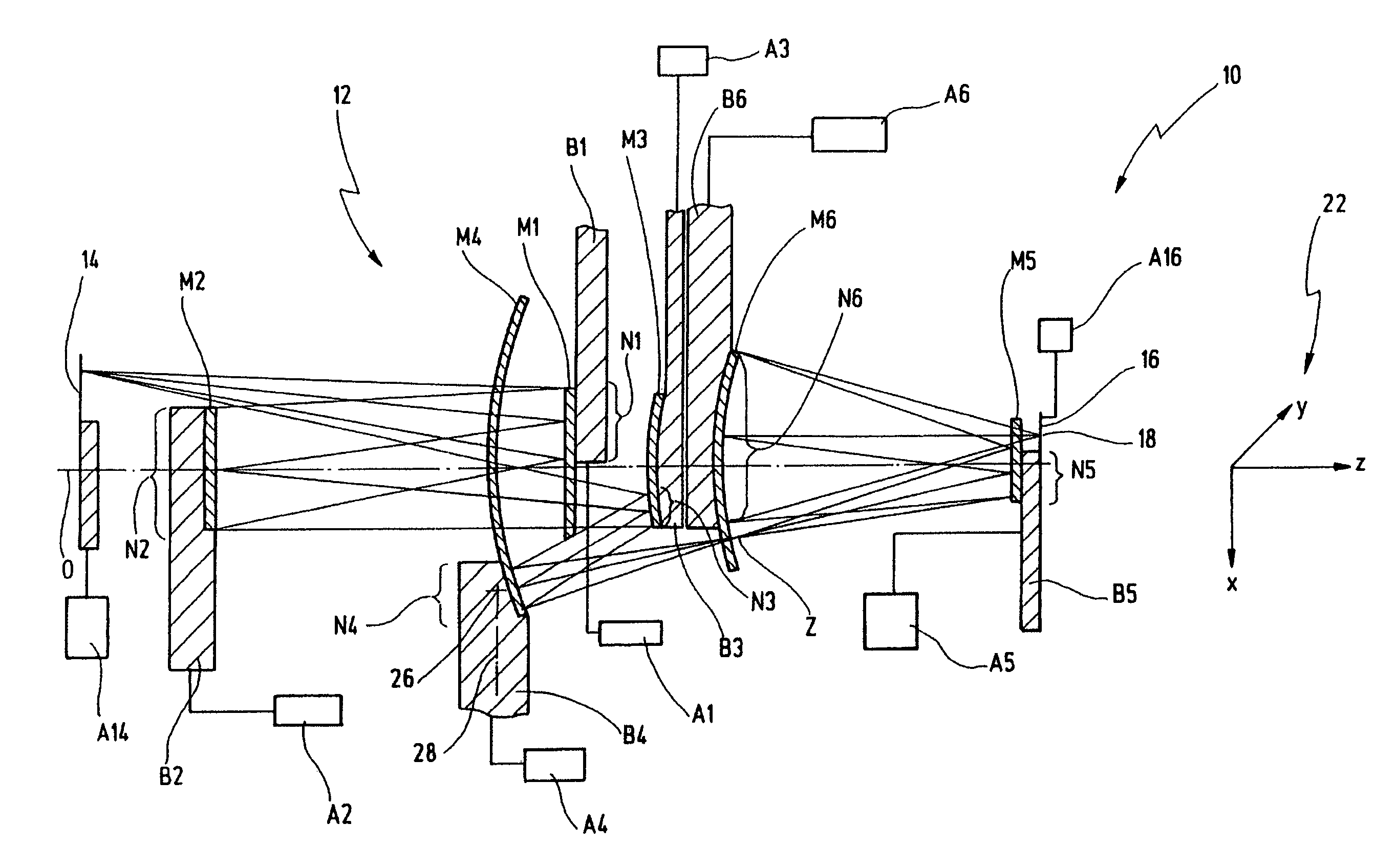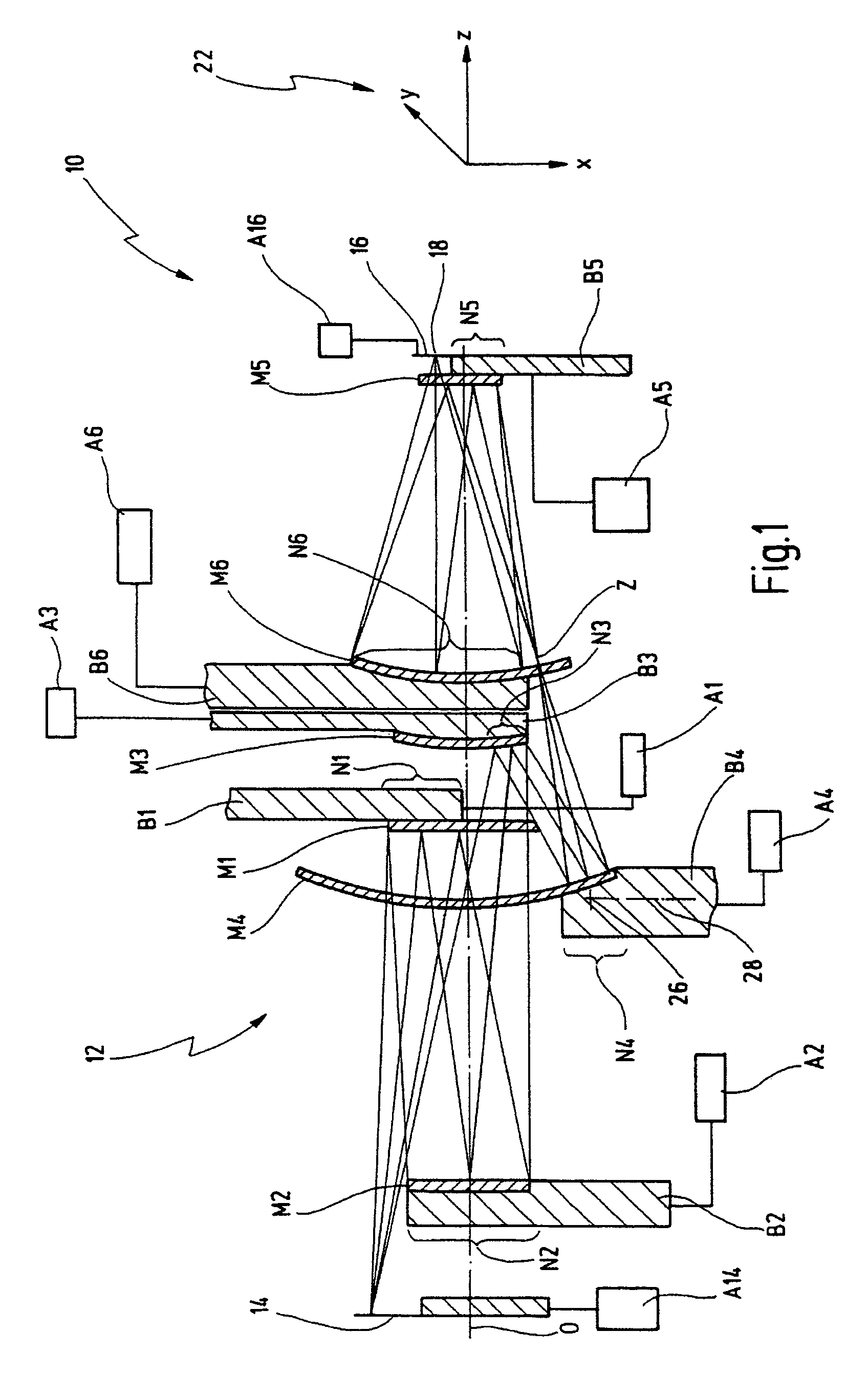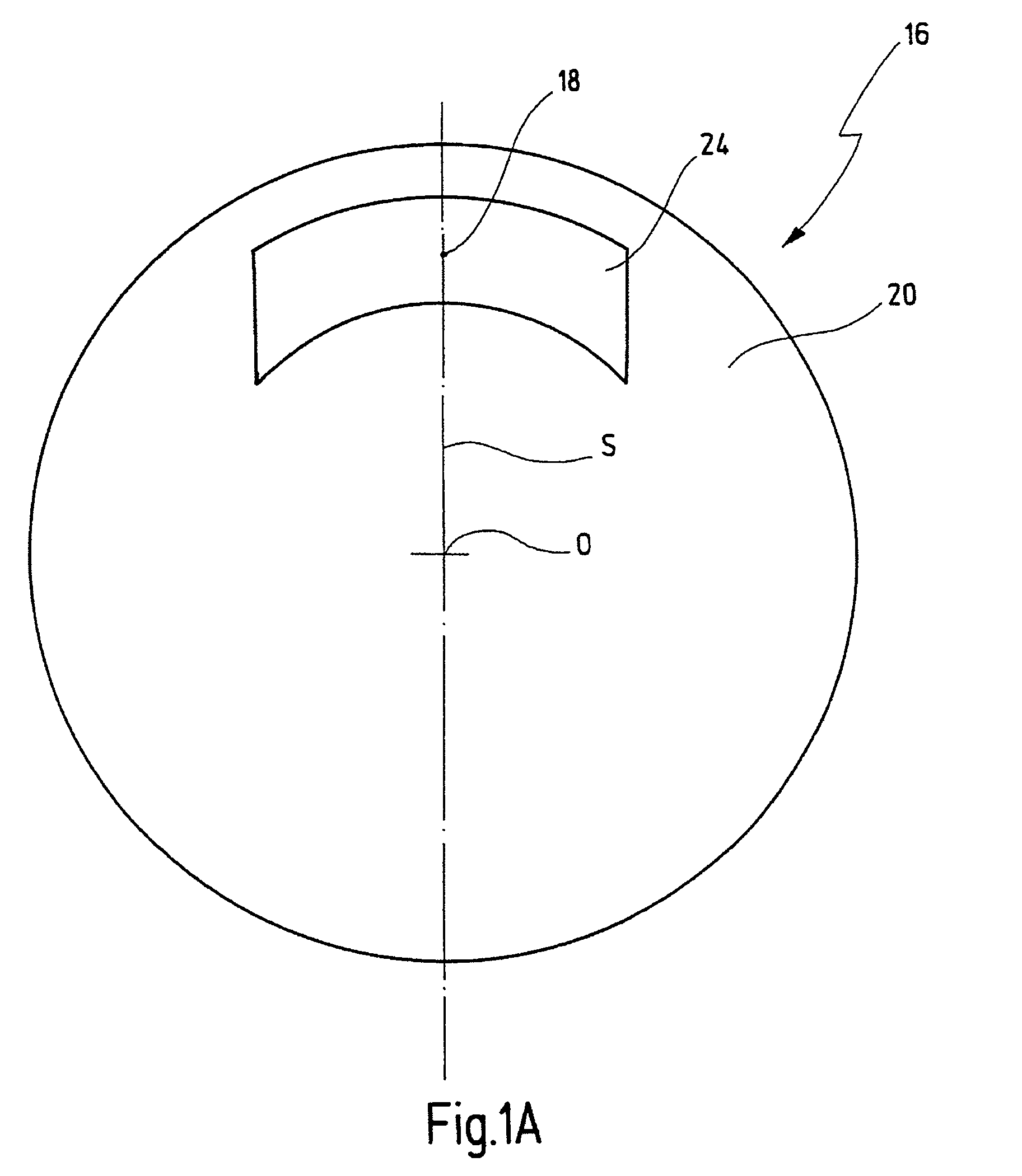Method for correcting astigmatism in a microlithography projection exposure apparatus, a projection objective of such a projection exposure apparatus, and a fabrication method for micropatterned components
- Summary
- Abstract
- Description
- Claims
- Application Information
AI Technical Summary
Benefits of technology
Problems solved by technology
Method used
Image
Examples
Embodiment Construction
[0049]A microlithography projection exposure apparatus provided with the general reference numeral 10 is illustrated in FIG. 1 in the region of a projection objective 12. Further components of the projection exposure apparatus 12 such as, for example, the light source or the illumination system between the light source and the projection objective 10 are not illustrated.
[0050]The projection exposure apparatus 10 preferably operates in the EUV spectral region at a wavelength of 13 nm.
[0051]A pattern (not illustrated in more detail) of an object 14 that is arranged in an object plane and denoted in microlithography as a reticle is imaged by means of the projection objective 12 onto a substrate 16 that is coated with a light-sensitive material and is also denoted as a wafer in microlithography. The substrate 16 is located in the image plane of the projection objective 12.
[0052]The projection objective 12 has a plurality of optical elements in the form of mirrors M1, M2, M3, M4, M5, M6....
PUM
 Login to View More
Login to View More Abstract
Description
Claims
Application Information
 Login to View More
Login to View More - R&D
- Intellectual Property
- Life Sciences
- Materials
- Tech Scout
- Unparalleled Data Quality
- Higher Quality Content
- 60% Fewer Hallucinations
Browse by: Latest US Patents, China's latest patents, Technical Efficacy Thesaurus, Application Domain, Technology Topic, Popular Technical Reports.
© 2025 PatSnap. All rights reserved.Legal|Privacy policy|Modern Slavery Act Transparency Statement|Sitemap|About US| Contact US: help@patsnap.com



